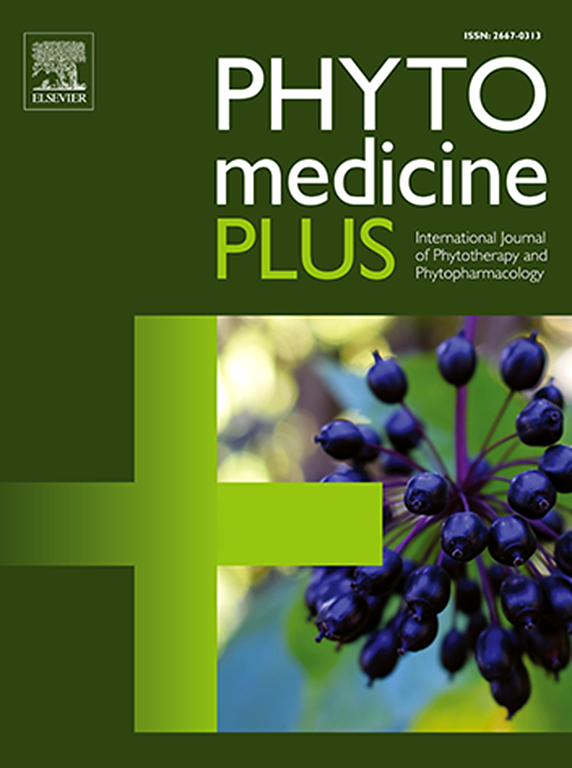Unveiling the cancer-fighting potential of Rheum species (Rhubarb): Phytochemistry, ethnopharmacology, and mechanistic insights into the anticancer effects of key anthraquinones
Q3 Pharmacology, Toxicology and Pharmaceutics
引用次数: 0
Abstract
Background
Rhubarb (Rheum spp.) has been cultivated for over 5,000 years for both medicinal and culinary purposes. Renowned in traditional and modern medicine, it offers a range of therapeutic benefits. The rhizome of rhubarb, recognized as a significant medicinal plant, was first documented as early as 270 BC in the ancient Chinese text “Shen Nong Ben Cao Jing”. Notably, rhubarb is celebrated for its anti-cancer properties, gastrointestinal regulation, anti-inflammatory effects, and ability to inhibit fibrosis. Cancer, a leading cause of global morbidity and mortality, underscores the urgency to identify new therapeutic agents. Despite rhubarb’s extensive history of use, there is a pressing need for a comprehensive review that examines its anti-cancer properties and underlying mechanisms.
Purpose
This review aims to examine the phytochemistry, ethno-medicinal applications, and anti-cancer capabilities of Rhubarb. Additionally, it will explore the underlying mechanisms of the anti-neoplastic activity of the most prevalent anthraquinones found in Rheum species.
Methods
A comprehensive search was conducted for randomized controlled trials on the benefits of Rheum species, using databases such as PubMed, Elsevier, SCOPUS, and the Cochrane Database for Systematic Review.
Results
Rhubarb exhibits diverse biological effects through its phytoconstituents, making it effective in preventing and treating various diseases, including cancer. Key anthraquinones in rhubarb, such as emodin and aloe-emodin, have demonstrated the ability to inhibit cellular proliferation, induce apoptosis, and suppress metastasis in cancers of the breast, colon, lung, liver, blood, pancreas, stomach, and oral cavity. The chemopreventive and anti-carcinogenic potential of Rheum species stems from their modulation of critical molecular mechanisms and signaling pathways including NF-kappa B (NF-κB), Tumor Suppressor Gene (p53), tyrosine kinases, phosphoinositol 3-kinase (PI3K), mitogen-activated protein kinase (MAPK), protein kinase C (PKC) involved in various anti-cancer activities. The review findings also elucidate the potent anti-inflammatory activity of rhubarb, supported by various mechanisms including inhibition of lipoxygenase (LOX), cyclooxygenase (COX) and hyaluronoglucosaminidase (HYAL) enzymes, reduction of pro-inflammatory responses, and modulation of inflammatory signaling pathways. These findings highlight the therapeutic potential of rhubarb’s bioactive anthraquinones that show a great potential in fighting cancer and could be used for various therapeutic applications.
Conclusions
Rhubarb contains herbal remedies that have the potential to prevent and treat a variety of human malignancies. Many chemical constituents of rhubarb, especially anthraquinones may be the cause of its therapeutic properties. The preclinical research discussed in this review strongly implies that Rheum species have a significant ability to prevent and treat human malignancies.

揭示大黄(Rhubarb)的抗癌潜力:植物化学,民族药理学,以及关键蒽醌类抗癌作用的机制见解
大黄(Rheum spp.)作为药用和烹饪用途已经被种植了5000多年。在传统和现代医学中享有盛誉,它提供了一系列的治疗益处。大黄是一种重要的药用植物,早在公元前270年,中国古代文献《神农本草经》就记载了大黄的根茎。值得注意的是,大黄因其抗癌特性、胃肠调节、抗炎作用和抑制纤维化的能力而闻名。癌症是全球发病率和死亡率的主要原因,它强调了确定新的治疗药物的紧迫性。尽管大黄有广泛的使用历史,但迫切需要对其抗癌特性和潜在机制进行全面的审查。目的综述大黄的植物化学、民族医药应用及抗癌作用。此外,本文还将探讨大黄属植物中最常见的蒽醌类抗肿瘤活性的潜在机制。方法利用PubMed、Elsevier、SCOPUS、Cochrane等数据库,对大黄属植物的益处进行随机对照试验的综合检索。结果大黄通过其植物成分表现出多种生物效应,对包括癌症在内的多种疾病具有有效的防治作用。大黄中的关键蒽醌类物质,如大黄素和芦荟大黄素,在乳腺癌、结肠癌、肺癌、肝癌、血癌、胰腺癌、胃癌和口腔癌中具有抑制细胞增殖、诱导细胞凋亡和抑制转移的能力。大黄属植物的化学预防和抗癌潜能源于其对关键分子机制和信号通路的调节,包括NF-κB (NF-κB)、肿瘤抑制基因(p53)、酪氨酸激酶、磷酸肌醇3激酶(PI3K)、丝裂原活化蛋白激酶(MAPK)、蛋白激酶C (PKC)等参与各种抗癌活性的分子机制和信号通路。综述结果还阐明了大黄有效的抗炎活性,其机制包括抑制脂氧合酶(LOX)、环氧合酶(COX)和透明质糖氨基酶(HYAL)酶,减少促炎反应和调节炎症信号通路。这些发现突出了大黄生物活性蒽醌的治疗潜力,在抗癌方面显示出巨大的潜力,可以用于各种治疗应用。结论大黄具有预防和治疗多种人类恶性肿瘤的作用。大黄的许多化学成分,特别是蒽醌可能是其治疗特性的原因。本综述所讨论的临床前研究有力地表明大黄属植物具有显著的预防和治疗人类恶性肿瘤的能力。
本文章由计算机程序翻译,如有差异,请以英文原文为准。
求助全文
约1分钟内获得全文
求助全文
来源期刊

Phytomedicine Plus
Medicine-Complementary and Alternative Medicine
CiteScore
3.70
自引率
0.00%
发文量
178
审稿时长
81 days
期刊介绍:
 求助内容:
求助内容: 应助结果提醒方式:
应助结果提醒方式:


